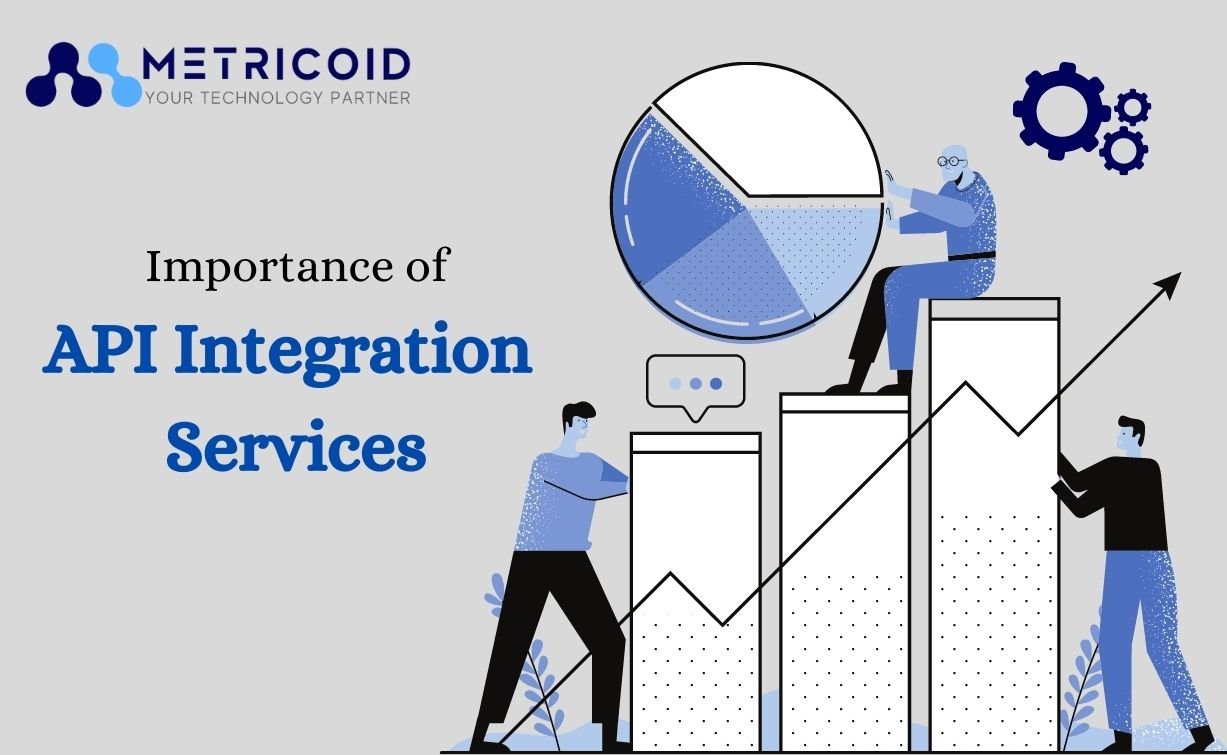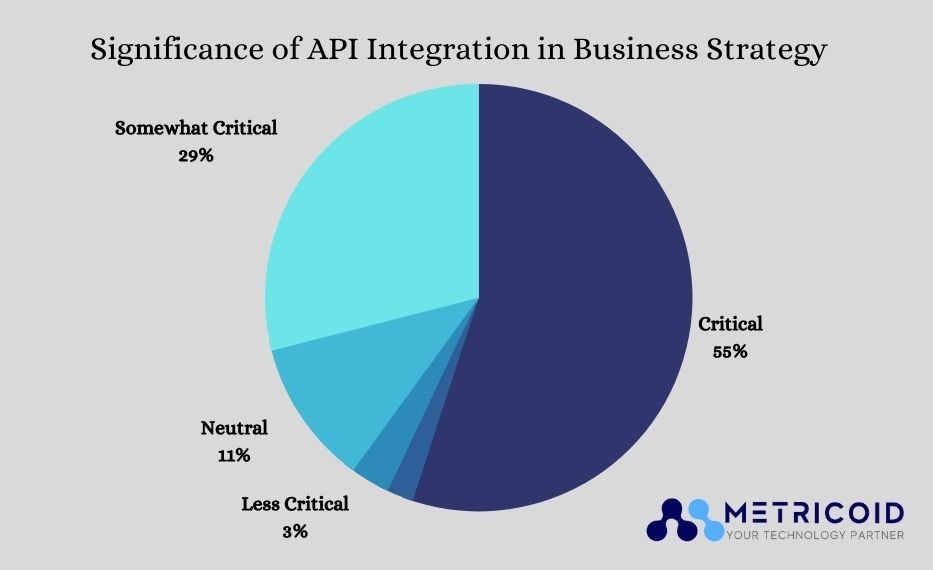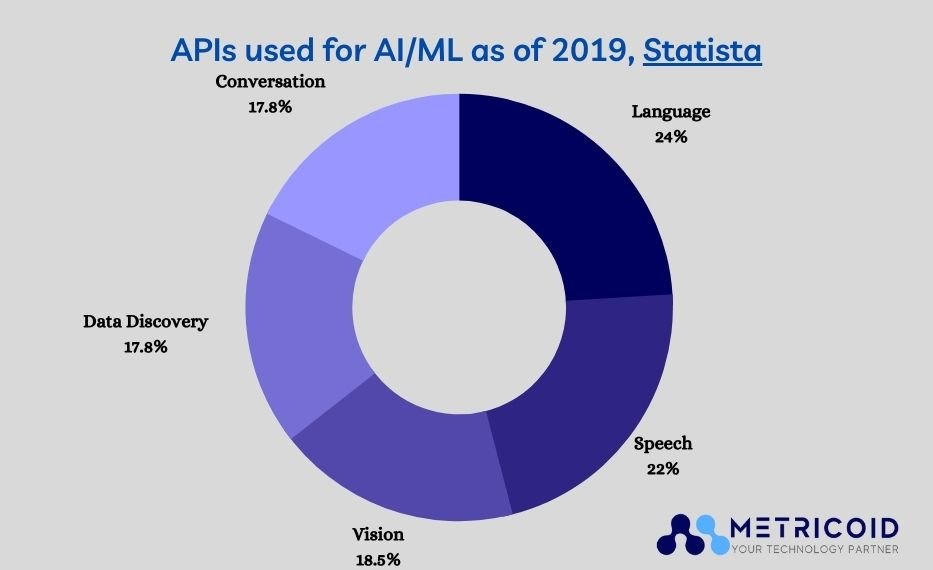Importance of API Integration Services

Table Of Contents
Introduction
API has established a foothold in IT infrastructures throughout time. API integration may be useful for non-technical persons who want to manage a flawless IT system for their organizations.
Modern solutions are extremely interdependent and necessitate a continuous flow of many data types. These data flows are smooth, secure, and dependable thanks to application programming interfaces (APIs).
APIs make it possible for different systems to interact with each other. With their assistance, you can easily add the necessary features and functionality to your solution.
What are APIs and why utilize them?
In its most basic form, an Application Programming Interface (API) is a technique through which a software provider grants other parties regulated, standardized connections to their code or data. It’s called an “interface” because it won’t let other parties change the program’s technology stack, instead, it’ll act as a surface layer that would enable them to use the program’s unique functionality or data.
It’s easy to see why application programming interfaces are so popular among software development businesses and suppliers.
Take into account their diversity, speed of dealing with massive data volumes or sophisticated functionality, the amount of intellectual property (IP) control APIs provide software designers, and the immensely abundant pool of business and technological opportunities.
What is API Integration?
API integrations allow businesses to streamline processes by connecting their programs and databases to industry-specific applications. They allow employees to profit from several cloud-based apps while also increasing product creation by ensuring a smooth and continuous connection between them.

The above graphical representation demonstrates the importance of API Development and Integration trends in the year, 2020.
APIs enable businesses to implement innovative projects quickly and efficiently, saving both time and money. External third-party applications, such as Twitter, or Google, provide third-party APIs to provide developers access to their capabilities.
The research, produced by Cloud Elements and based on responses from roughly 400 integration specialists and IT executives from 44 countries, provides trends and backdrop made more relevant by many people’s quick transition to more remote work. API integration is a significant aspect of 83 percent of respondents’ corporate strategy, fueled by digital transformation initiatives and cloud application adoption.
APIs (Application Programming Interfaces) enables programmers to connect their custom programs to external devices over the network or in the cloud. This speeds up development time and lowers expenses.
Why are APIs so important?
Business processes, services, content, and data are all integrated through Application Programming Interfaces (APIs). They make it simple and secure to link partners, systems, internal teams, and a variety of other sources.
The digital world is shaped by APIs. Today, API online portal directories feature over 20,000 APIs, with hundreds more being added every month, and the trend is growing. Furthermore, these directories only list public APIs. When you consider how many APIs are utilized domestically by businesses today, the figure of 20,000 is reasonable at best.
An example!
The AccuWeather API collects thorough, precise meteorological data in over 100 languages for literally every region on the earth. As if that wasn’t amazing enough, AccuWeather charges a fee for clients to use this data in their apps via simple APIs.
There are already over 300 versions of the AccuWeather API that have been adapted for rapid integration with their customers’ apps. This allows their customers to use AccuWeather data to present their users with up-to-date weather warnings and localized weather information tailored to their specific needs.
Through its API iterations, AccuWeather has made a point of providing timely and customized responses to their customers’ requests. Serving up exact weather notifications and specific GPS coordinates are just a few of the features that have enticed a slew of clients to integrate their API into their own systems.
Types of APIs
APIs are widely used and approved in online applications. Public, partner, private, and composite APIs are the four most prevalent forms of API used in web-based applications.
-
Public APIs
Any outside developer or business can utilize a public API because it is open and available. A company that develops and offers a public API will have a business model that includes sharing its applications and data with other companies.
In most public APIs, identification and approval are kept to a minimum. An organization could potentially try to commercialize the API by charging a fee for each call made to the public API.
-
Partner APIs
A partner API is a tool for facilitating business-to-business transactions that are only available to a small group of outside developers or API consumers. For example, if a company wishes to share customer data exclusively with outside CRM businesses, it can utilize a partner API to connect the internal customer data system with those external partners — no other API use is allowed.
Associates with particular rights and licenses have access to these APIs. As a result, partner APIs typically include more robust authentication, authorization, and security features.
In addition, most businesses do not directly market APIs – rather, partners are compensated for their services, not for API usage.
-
Internal APIs
An internal (or private) API is designed to connect networks and information within the company. An internal API, for example, might link an organization’s payroll and HR systems.
Because internal APIs are meant for internal usage, and such security levels are presumed to be in place through other policies, they typically have minimal security and authentication — or none at all. This is changing, however, as organizations’ API strategies are more influenced by increased threat awareness and regulatory compliance requirements.
-
Composite APIs
Composite APIs are made up of two or more APIs that work together to create a series of connected or interdependent activities. Composite APIs can be useful for addressing complex or closely linked API behaviors, and they can occasionally outperform individual APIs in terms of speed and reliability.
APIs have virtually no limitations in terms of what they can be used for. Machine data, highway sensors, shipping containers, and railway trains can all use APIs to share data and communicate with the outside world.
Applications may operate intelligent domestic products, PCs can be interwoven into a communicative IT infrastructure, and APIs can link and integrate other parties. In the digital era, the API universe pushes limits and opens up new possibilities.
How can APIs help your Business?

In the physical world, APIs are utilized on a variety of systems. You may build a flawless website or app for your company with API connectivity. This makes it simple for your consumers to contact you. API integration acts as a link between your company and your customers.
You may also utilize API integration to connect two different web applications and use them together for commercial activities. API integration services are in charge of all exchanges and interactions within a company, including the transmission of data between applications and devices. This is extremely useful in businesses, whether they are little or huge.
API integration services are beneficial to all businesses in this manner. To keep up with today’s software-driven world, invest in API connectivity for your business processes. Metricoid Technology Solutions can undoubtedly assist you in integrating APIs into your company’s operations.
APIs allow other systems and apps to use existing application functionality and data. This means that data in a corporation database, for example, can be made publicly available to other internal systems via an API (i.e., legacy system integration). Only isolated or locally used resources could be made available to other systems prior to the introduction of APIs.
APIs may help firms innovate, build new business models, and take advantage of their digital transformation by allowing them to connect with the outside world. APIs are already being provided by many firms to suppliers, consumers, and other members to help them access relevant data. APIs also allow this information to be easily integrated into other systems, allowing for real-time access.
-
Simple and better integration
An API is a feature that allows multiple environments, software, and services to interact, share data, and execute a range of tasks with one another. For example, to speed some operations, one piece of software can be utilized inside another or linked to other applications.
APIs are required for digitalization and also the development of market models. They act as a reference for system economies, which can be developed faster, more efficiently, and for less money. As a consequence, your company will achieve superior outcomes while spending less on development. You can interface your applications with third parties on the outside to improve their functionality and usefulness.
-
Task automation and scheduling
APIs have become important for the integration of apps, which is the cornerstone of many automation methods. Integrations streamline routine tasks, allowing for a smooth changeover between linked programs.
-
Service enhancements
APIs make it easier to build new apps, marketing strategies, and digital products by allowing for effective complementation with third-party products and services while also speeding up development. As a result, many developers and business owners are willing to pay to use it.
-
Innovation and advancement
APIs are required for digitalization and also the development of market models. They act as a reference for system economies, which can be developed faster, more efficiently, and for less money.
Step-By-Step procedure of API integration
API integration has changed and evolved on its own in recent years. With several new applications and API development tools competing for the public’s attention and so many possibilities available by integrating these apps, API integration has now become a hot topic.
-
Research and Planning
When it comes to web APIs, it’s crucial to remember that they’re not all the same, and they weren’t all made equal. Three items should be the focus of your investigation.
- With what kind of API are we interacting with? SOAP (Simple Object Access Protocol), REST (Representational State Transfer), and RPC (Remote Procedural Call) are the three forms of web APIs.
- With what kind of data payload are we dealing? These APIs can send information in XML, JSON, or both formats in most cases, but this is not always the case.
- Do we have all of the necessary paperwork? If the apps are well-known, the documentation should be thorough, including a WSDL (Web Services Definition Language) for SOAP applications and a WADL (Web Application Description Language) for REST apps. Developers will be able to read the documentation to learn how to format their queries and what information is available.
-
Organizing the data flow
It’s also possible that the data you want to transfer isn’t an object that the other end-point can handle naturally. Many SaaS apps now support “custom objects,” which allow you to add additional sorts of data to an interface.
However, if you conduct enough integrations, you will come across cases where data in the native app must be converted to an entirely different object in the end application. This will necessitate some resourcefulness on the developer’s part.
-
Data mapping
Once you’ve sketched out the workflows, it’s a good idea to develop a primary data map to visualize everything you’ve done so far. When it comes to development, this will make your life easier.
This approach is also the most effective way to ensure that all developers, consultants, and users are on the same page before work begins and changes become more difficult.
The initial (Source) application will be on one side of the data map, with all of the objects you want to transfer and all of the required information about those items on the other. On the other hand (Target), you’ll make a list of all the objects that the starting objects will become once they’ve entered the target system.
-
Development
If you’ve completed the first three stages, the rest of the process should go smoothly. Consider it as if you were writing an essay that you had carefully planned out. Ideally, the code should compose spontaneously.
-
Testing
In the API development process, testing is a crucial stage. Testing ensures that your integration will function as planned under the end customer’s stated conditions. To test the integration without impacting production settings, it’s best to have a testing environment for the applications you’re integrating.
It’s also worth noting that the end-user should be heavily involved in the testing process. They frequently have a better understanding of the data than the engineers and can easily discover minor flaws before they become major problems!
Conclusion
API allows two or more distinct systems to collaborate and achieve goals that would otherwise be out of reach. With this in mind, a solid API is no longer a luxury item. It’s a must-have because the app wouldn’t be effectively designed and then used without engagement if it didn’t have it.
Each operating system, webpage, or software can have its own set of APIs. Typically, operating platforms such as Windows, Google Maps, Facebook, Twitter, and eBay provide APIs to allow third parties to write apps that use their solutions. These open-source tools are known as Open APIs, and you can use them without any limitations. There are almost 15,000 Open APIs available!
We have industry professionals like Metricoid Technology Solutions Private Limited to assist you with all stages of API integration and on your journey to digital transformation. Metricoid is a company that can be recognized in serving to effective API integration and digital solution needs for companies of any scale and age, and that too at most affordable pricing, thanks to a talented team with more than 12 years of experience in the field of digital and IT solutions for numerous companies. For further information, visit the website.






